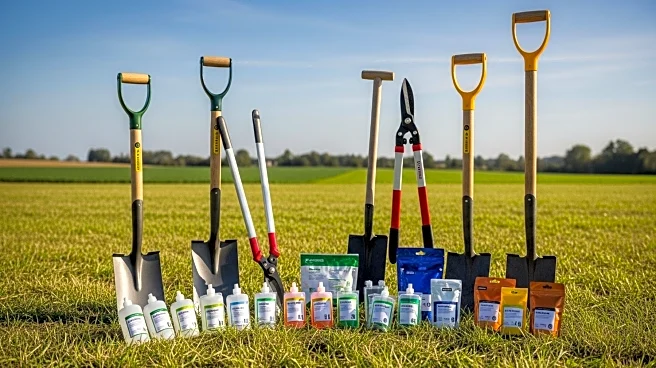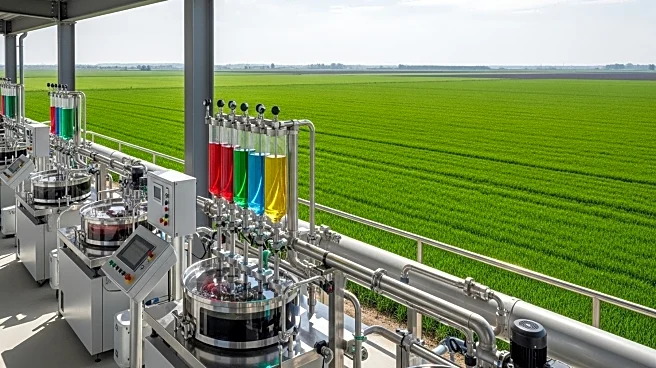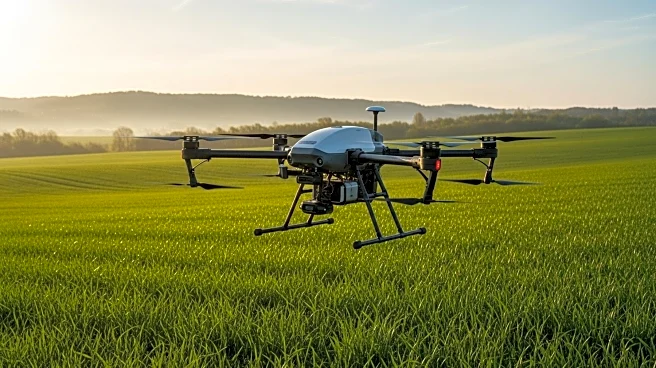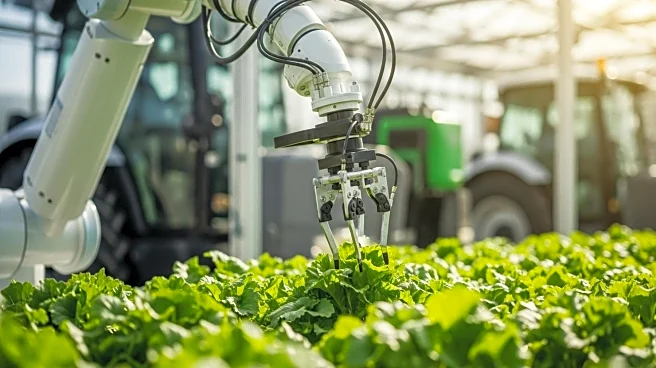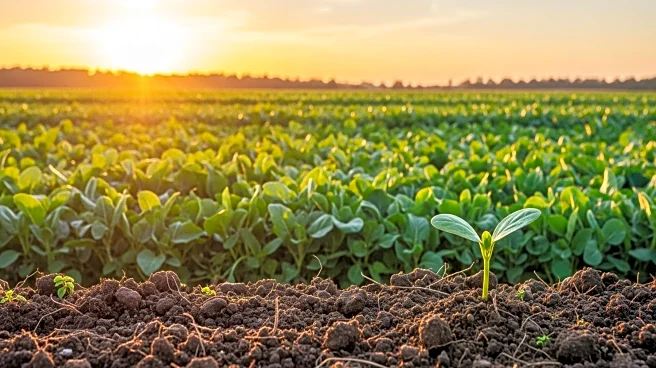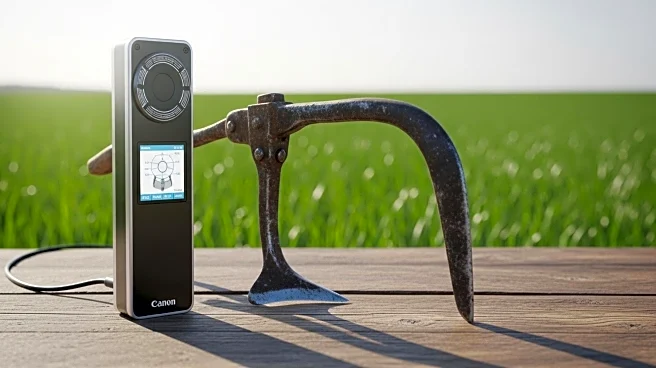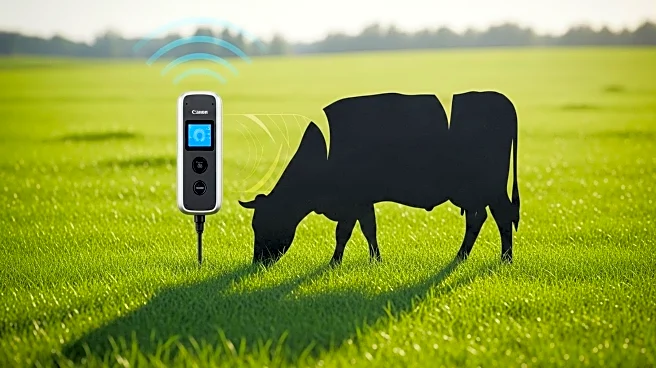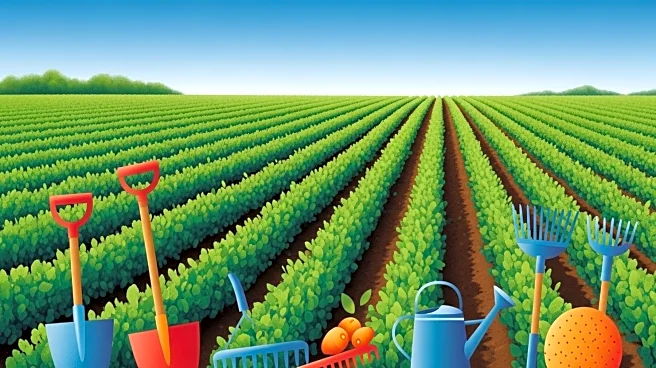What's Happening?
Farmers are increasingly adopting drone technology to seed cover crops, a practice that offers precision and flexibility in timing. This method allows farmers to react to weather conditions, ensuring seeds are sown just before rainfall for optimal soil contact and germination. Mitchell Hora, a farmer and CEO of Continuum Ag, highlights the benefits of using drones for seeding cover crop blends into standing soybeans. The technology is particularly useful for hard-to-reach fields and areas where traditional equipment cannot operate. Despite challenges such as calibration and cost, drones provide advantages in canopy penetration and precise seed placement.
Why It's Important?
The use of drones in agriculture represents a significant shift towards more efficient and sustainable farming practices. By enabling precise seeding, drones help farmers manage time constraints during harvest and improve soil health through cover crops. This technology could lead to increased adoption of cover crops, which are crucial for soil conservation and reducing erosion. The ability to target specific areas and optimize seeding times can enhance crop yields and reduce resource waste, benefiting both farmers and the environment.
What's Next?
As drone technology advances, farmers may see increased payload capacities and more manageable regulations, potentially leading to wider adoption. The industry could witness a shift towards integrating drones with traditional equipment for comprehensive farming strategies. Continued innovation in drone capabilities might also address current limitations, such as cost and seeding capacity, making this technology more accessible to a broader range of farmers.
Beyond the Headlines
The integration of drones into agriculture could have broader implications for rural economies and technological advancement in farming. It may encourage younger generations to engage in agriculture, attracted by the technological aspect. Additionally, the environmental benefits of increased cover crop usage could contribute to broader climate change mitigation efforts.


